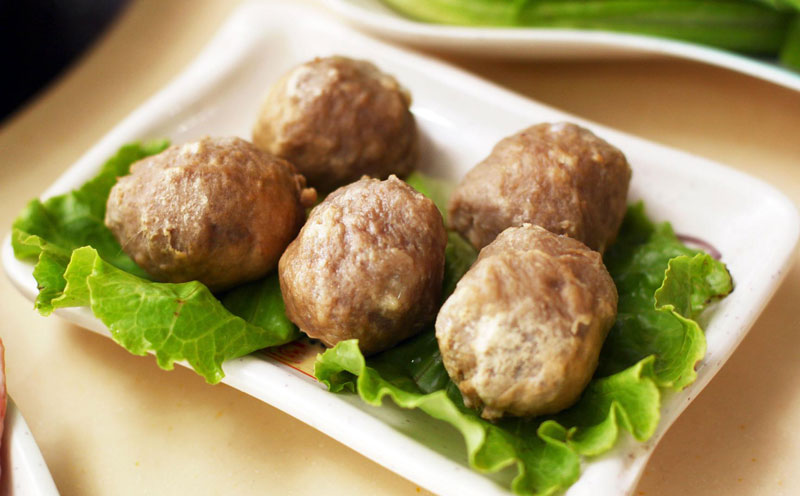
The Queshi Bridge in Shantou, Guangdong Province (File photo)

Chaoshan beef meatballs (File photo)
If you want to travel for food in China, Chaoshan, a coastal region located in the east of China's Southern Guangdong Province, is the place for you. Ask any Cantonese person what he or she thinks of Chaoshan and they will tell you that eating is a huge deal there.
The philosophy of Chaoshan cuisine, much like Cantonese cuisine, is to preserve the original flavors of the ingredients.-
Take their famous beef meatballs for example, they have to be cooked just right so they are still firm yet soft when you bite into them. A single bite is like an explosion of freshness in your mouth. When I had them for the first time, it was like I had gone to Heaven. My impression of Chaoshan was forever linked with their meatballs.
Since eating is such a big deal there, I decided to eat my way through Chaoshan-.
Getting to know Chaoshan
Chaoshan is an area that combines the cities of Shantou, Chaozhou and Jie-yang. There are four flights every day from Beijing and the trip is about three hours. From Guangzhou, capital of Guangdong, you can take a long-distance bus to get to Chaoshan, which also takes about three hours.
When my flight landed at the Jieyang Chaoshan International Airport, it was almost noon. December in Chaoshan is not cold. Temperatures are often above 20 C. My friend, who works at Shantou University, picked me up at the airport and drove me to Shantou city, 28 miles (45 kilometers) from the airport. Shantou, home to 5.5 million of people, is a coastal city that takes pride in its abundant seafood such as fish, oysters and clams.
Chaoshan snacks
Our first destination was Xiaogongyuan, "Little Park," which is a cultural and historical area in Shantou. It is not actually a park, but an 86-year-old pavilion in Shantou's old town district.
The district was the city's financial center when the port opened in 1930s. It is home to a seven-floor department store with over 100 stores.
The department store, called "Old Paris" by locals, combines European and traditional Chinese architectural styles. Once the largest commercial complex in the city, full of artisans and manual laborers, it reflects the glory of China's past.
We walked past old buildings with aged windows before we stopped at a restaurant called Piaoxiang Xiaoshidian, or Delicious Snacks.
Since Shantou is a coastal city, I told my friend I wanted to find some seafood snacks. My friend recommended oyster omelet, a mix of egg batter and fresh oyster meat; and fish ball noodle soup, thinly sliced fishcakes with hand-cut rice noodles in clear broth.
You can find similar snacks in other Southeast Asian countries, but here in Shantou, cooking is mostly done by steaming or stir-frying ingredients. Sometimes deep frying is involved, but locals don't recommend it as it reduces freshness.
When you start eating, you might find your cup, bowl and plate have been sealed in plastic for hygiene purposes. However, many Cantonese people still doubt their cleanliness. For instance, my mother always washes these utensils with boiled water after she unwraps them.
After lunch, we continued eating. Getting around the city is really cheap. The city bus costs 2 yuan (30 cents). Taxi fares start around 10 yuan depending on the destination. Trips by motorized trishaws are cheaper than taking a taxi, but you need to bargain with the driver.
We took a taxi to Paifang Street, another cultural and historical area in Shantou. In Chinese, paifang is a traditional Chinese wooden or stone archway built to commemorate an individual.
Paifang Street is another place to find Chaoshan snacks. We stopped at a restaurant and ordered changfen (rice noodle rolls) and rice rolls - steamed rice rolled up with some prawns or barbecue pork inside and doused in soy sauce. It is a classic part of Cantonese Dim Sum.
As you might know, Chinese people are not really in the habit of having dessert. In Guangdong, however, Chinese-style sweets such as red-bean soup and coconut milk are very popular. I also ordered my favorite dessert, tofu pudding - beancurd jelly with sugar syrup. I used to have it every day when I was little.


















































